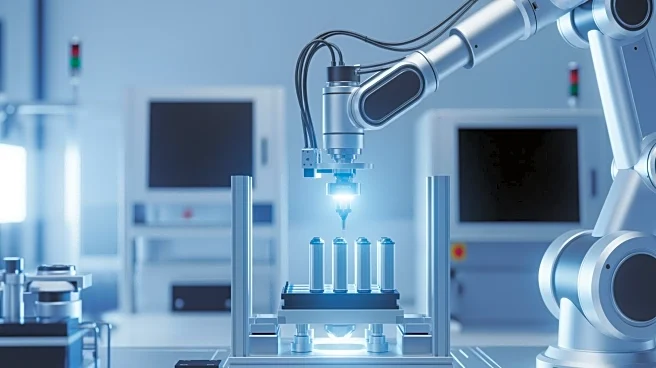What's Happening?
Labman's TIDAS technology has significantly improved the efficiency of battery manufacturing for the Energy Materials Group at the University of Birmingham. The technology provides a precise method for measuring
agglomerate size in battery electrode slurries, which are typically challenging to assess due to their high opacity. This advancement allows researchers to avoid using unsuitable slurries, thereby saving time and resources. The TIDAS system offers early detection of poorly dispersed slurries, preventing issues that could arise during the battery manufacturing process, such as reduced cell capacity and battery lifespan. The system's ability to provide consistent and reproducible measurements has replaced the less reliable manual Hegman gauge test, which was previously used.
Why It's Important?
The implementation of TIDAS technology in battery manufacturing is crucial as it enhances the precision and efficiency of the production process. By providing early detection of unsuitable slurries, the technology reduces material waste and saves significant time, which is critical in a competitive industry. This advancement supports the development of high-quality batteries, which are essential for various applications, including electric vehicles and renewable energy storage. The ability to improve battery performance and lifespan can have a substantial impact on the energy sector, promoting sustainability and innovation. Additionally, the technology's success at the University of Birmingham could encourage broader adoption in the industry, leading to more efficient manufacturing practices.
What's Next?
The research team at the University of Birmingham plans to continue utilizing TIDAS technology to further enhance their battery manufacturing processes. The system's success in improving slurry quality and reducing waste suggests potential for broader industrial application. As the technology proves its value, it may be adopted by commercial manufacturers to optimize their production lines. This could lead to more widespread use of advanced battery technologies, supporting the transition to cleaner energy solutions. The ongoing collaboration with Labman and the Faraday Institution's NEXTRODE project indicates a commitment to advancing electrode production metrology, which could drive further innovations in the field.
Beyond the Headlines
The introduction of TIDAS technology highlights the importance of precision in scientific research and manufacturing. By addressing the challenges of measuring agglomerate size in opaque slurries, the technology not only improves battery manufacturing but also sets a precedent for other industries facing similar challenges. The collaboration between academic institutions and technology companies like Labman underscores the value of interdisciplinary partnerships in driving innovation. As industries continue to seek sustainable solutions, technologies that enhance efficiency and reduce waste will play a critical role in shaping the future of manufacturing.











